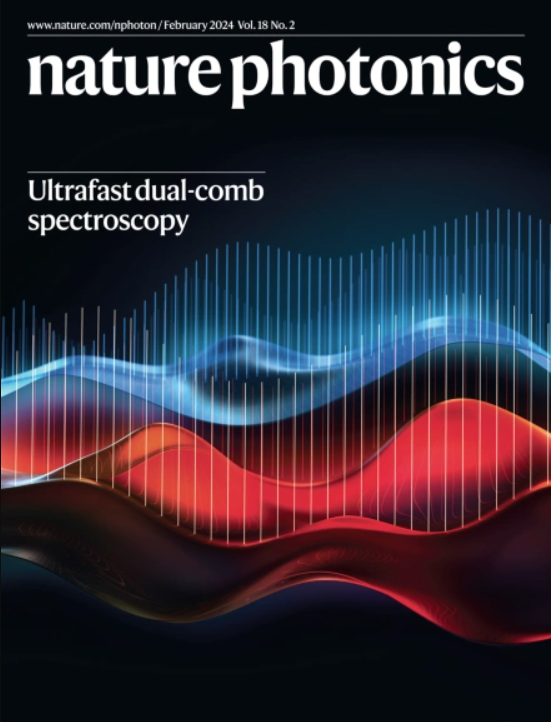双折射纳米球的超薄层使虾呈现出明亮的白色。
IF 32.3
1区 物理与天体物理
Q1 OPTICS
引用次数: 5
摘要
关于光散射的一个基本问题是如何从薄层材料中获得由多次散射产生的白度。这一挑战源于光学拥挤现象,即,对于填充分数高于~30%的散射体,由于散射体之间的近场耦合,反射率显著降低。在这里,我们表明异黄蝶呤纳米球的极端双折射克服了光学拥挤效应,使虾的超薄色素团细胞能够产生多重散射和明亮的白色。引人注目的是,数值模拟表明,双折射源于异黄蝶呤分子的球晶排列,能够实现强烈的宽带散射,几乎达到随机球的最大堆积。这减少了产生明亮白度所需的材料的厚度,从而产生了比在空气的低折射率介质中操作的其他生物或仿生白色材料更有效的光子系统。这些结果强调了双折射作为一种结构变量对提高此类材料性能的重要性,并有助于设计二氧化钛等人造散射体的生物替代品。本文章由计算机程序翻译,如有差异,请以英文原文为准。

Brilliant whiteness in shrimp from ultra-thin layers of birefringent nanospheres
A fundamental question regarding light scattering is how whiteness, generated from multiple scattering, can be obtained from thin layers of materials. This challenge arises from the phenomenon of optical crowding, whereby, for scatterers packed with filling fractions higher than ~30%, reflectance is drastically reduced due to near-field coupling between the scatterers. Here we show that the extreme birefringence of isoxanthopterin nanospheres overcomes optical crowding effects, enabling multiple scattering and brilliant whiteness from ultra-thin chromatophore cells in shrimp. Strikingly, numerical simulations reveal that birefringence, originating from the spherulitic arrangement of isoxanthopterin molecules, enables intense broadband scattering almost up to the maximal packing for random spheres. This reduces the thickness of material required to produce brilliant whiteness, resulting in a photonic system that is more efficient than other biogenic or biomimetic white materials which operate in the lower refractive index medium of air. These results highlight the importance of birefringence as a structural variable to enhance the performance of such materials and could contribute to the design of biologically inspired replacements for artificial scatterers like titanium dioxide. The strong birefringence of liquid crystalline nanospheres in the body of the Pacific cleaner shrimp enables brilliant whiteness by overcoming undesirable optical crowding effects.
求助全文
通过发布文献求助,成功后即可免费获取论文全文。
去求助
来源期刊

Nature Photonics
物理-光学
CiteScore
54.20
自引率
1.70%
发文量
158
审稿时长
12 months
期刊介绍:
Nature Photonics is a monthly journal dedicated to the scientific study and application of light, known as Photonics. It publishes top-quality, peer-reviewed research across all areas of light generation, manipulation, and detection.
The journal encompasses research into the fundamental properties of light and its interactions with matter, as well as the latest developments in optoelectronic devices and emerging photonics applications. Topics covered include lasers, LEDs, imaging, detectors, optoelectronic devices, quantum optics, biophotonics, optical data storage, spectroscopy, fiber optics, solar energy, displays, terahertz technology, nonlinear optics, plasmonics, nanophotonics, and X-rays.
In addition to research papers and review articles summarizing scientific findings in optoelectronics, Nature Photonics also features News and Views pieces and research highlights. It uniquely includes articles on the business aspects of the industry, such as technology commercialization and market analysis, offering a comprehensive perspective on the field.
 求助内容:
求助内容: 应助结果提醒方式:
应助结果提醒方式:


